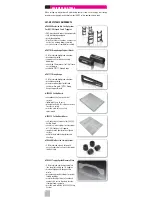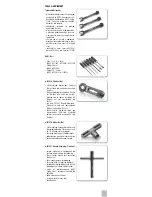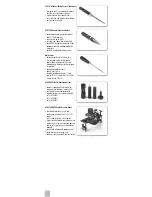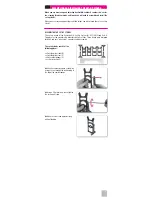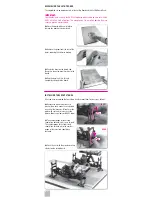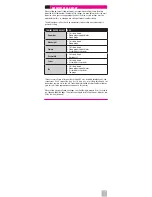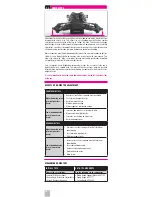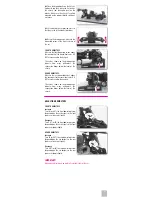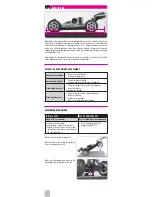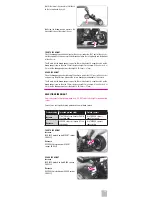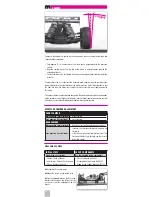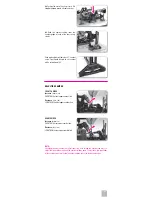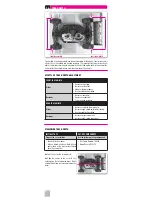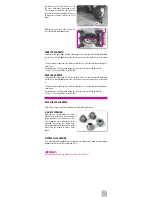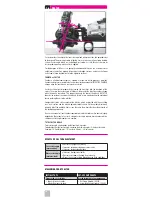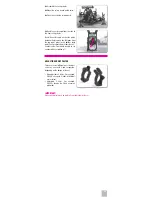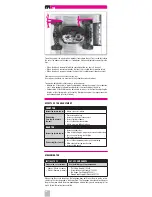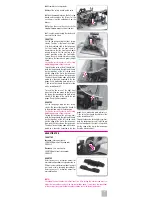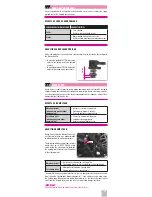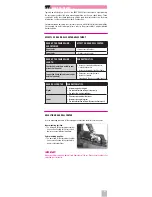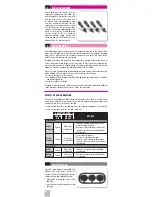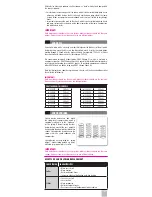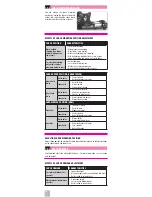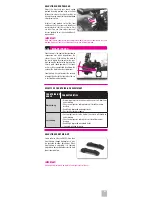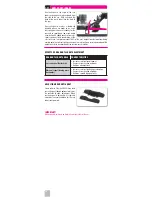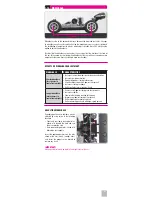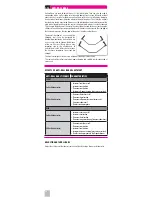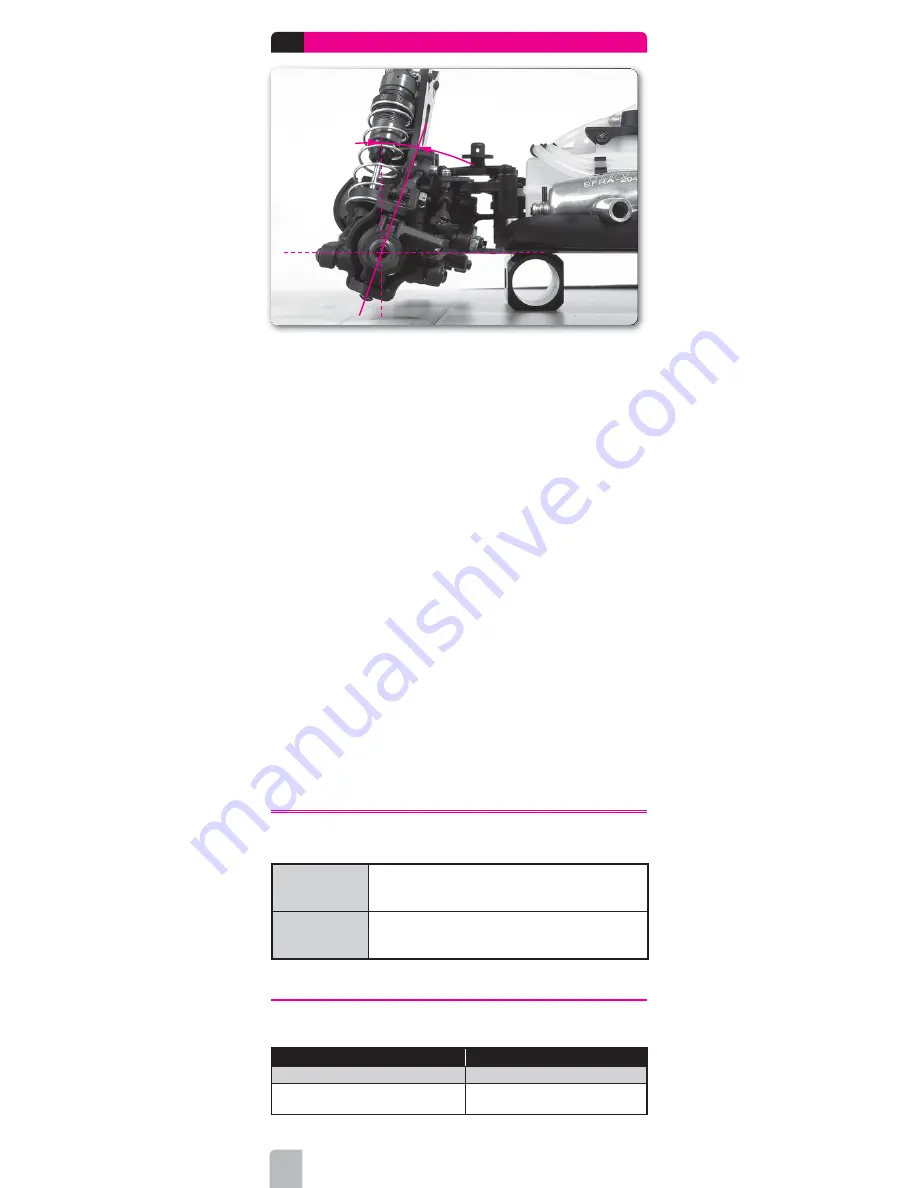
18
1.6 CASTER
caster
Caster describes the angle of the front steering block with respect to a line perpendicular
to the ground. The primary purpose of having caster is to have a self-centering steering
system. Caster angle affects on- and off-power steering, as it tilts the chassis more or
less depending on how much caster is applied.
For the purpose of RC cars, it is generally recommended that you use a steeper caster
angle (more vertical) on slippery, inconsistent and rough surfaces, and use a shallower
caster angle (more inclined) on smooth, high-grip surfaces.
CAMBER vs. CASTER
Camber is all about contact patch – keeping as much tire on the ground as possible.
Camber and caster are related in that caster can afford an amount of EFFECTIVE CAMBER
change when the front wheels are turned in a corner.
Caster has the effect of progressively leaning the front tires into the direction of the
corner. The more the caster angle is laid-back, the greater the effective camber change
when the wheels are turned. This happens because the tops of the wheels BOTH TILT
towards the inside of the corner; the wheels “dig in” more, counteracting the centrifugal
forces pushing the car to the outside.
Compare that to the static camber of the wheels, which is adjusted with the car sitting
on a level surface and the wheels pointed straight ahead. Static camber adjustments
primarily affect the outside wheels, since these are the wheels that bear the majority of
the load during cornering.
Hence, the amount of front camber required to maintain maximum tire contact largely
depends on the amount of caster. A steeper caster angle requires more camber, while a
shallower caster angle requires less camber.
TOTAL CASTER ANGLE
Total caster angle also depends on the front kick-up angle.
To determine the total caster angle, combine the kick-up angle + C-hub caster angle.
Example: 10° front kick-up + 10° caster in C-hub = 20° total caster
EFFECTS OF CASTER ADJUSTMENT
Less caster angle
(more vertical)
•
Decreases straight-line stability
•
Increases off-power steering at corner entry
•
Increases suspension effi ciency
More caster angle
(more inclined)
•
Increases straight-line stability
•
Decreases off-power steering at corner entry
•
Makes the car more stable through bumpy track conditions
MEASURING FRONT CASTER
INITIAL STEPS
SET-UP COMPONENTS
Prepare the car as follows
Use the following set-up components
• Shocks: Attach all shocks
• Wheels: Remove all wheels
• Flat Set-up Board #108202
• Assembled Set-up Stands #108805

